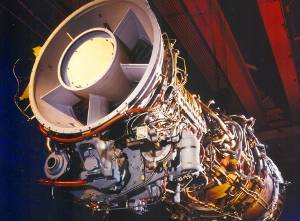GE LM2500 Digital Fuel Control Retrofit Kits for Navy
GE Marine reports that the United States Navy has retrofitted nearly 50 LM2500 marine aeroderivative gas turbines with GE’s Digital Fuel Control (DFC) kits. The LM2500s power the U.S. Navy’s CG-47 Ticonderoga class cruisers and DDG-51 Arleigh Burke class destroyers.
The U.S. Navy incorporated the DFC retrofit into a concurrent ship system modernization program. Since the first digital fuel controls were installed, the U.S. Navy has accumulated more than 100,000 DFC operating hours on selected DDG-51 and CG-47 class ships. In addition, the U.S. Navy recently purchased 16 DFC kits for four additional ships. GE anticipates continuing this modernization program throughout the above-mentioned class fleets.
According to Dave DePauw, GE Marine director of services, Evendale, Ohio, “In 1994, the U.S. Navy installed their first LM2500 equipped with the DFC technology aboard the Watson class large, medium-speed, roll-on/roll-off ships. The DFC technology -- as part of the standard engine equipment -- also has been delivered to international navies for recent LM2500 gas turbines applications, as well as on a variety of commercial projects where GE gas turbines are used to power cruise ships and fast ferries.”
In addition, the new LM2500 and LM2500+ gas turbines supplied by GE for U.S. Navy ship programs, including the Makin Island LHD 8 amphibious assault ship and the GE-powered Littoral Combat Ships, incorporate the engine’s standard DFC technology.
Benefits of the DFC technology include:
Improved engine resistance to possible fuel contamination through oil actuation of variable stator vanes (VSV) and the fuel metering valve.
Updated control of fuel and air scheduling within the gas turbine provides more accurate fuel/air scheduling through electrical feedback and closed-loop control. In addition, fuel characteristics and VSV positions can be recalibrated through the control software inputs.
Gas turbine control sensor redundancy on compressor discharge pressure, compressor inlet temperature and pressure, gas generator speed, VSV position, and fuel metering valve position.
Improved operator signals, alarms, and troubleshooting are provided by additional electrical sensors and actuator feedback. GE DFC kits also offer improved capabilities for data capture and condition monitoring.
Fuel savings thanks to better system response and reliability, reducing time required for high-power check-out and torque balancing after fuel control changes.
Primary DFC retrofit kit components include a fuel metering valve and two VSV actuators, both with redundant electronic feedback. An upgraded engine controller and shipboard wiring changes are also required to incorporate the DFC kit.











